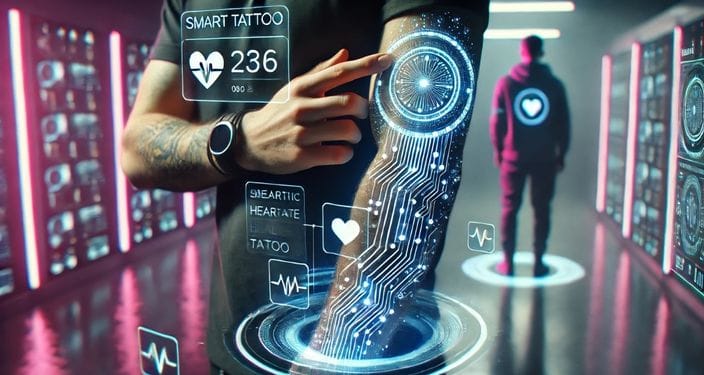Tattoos have long been a form of self-expression and art, etched into the skin with needles and ink. However, as with any art form, tattooing is not static. It evolves with societal trends and technological advancements. As we move further into the 21st century, tattoo technology is on the cusp of significant transformation. From robotic tattoo artists to improved removal techniques, the future of tattoos promises exciting developments for artists and enthusiasts alike.
The Rise of Robotic Tattoo Artists
One of the most intriguing trends in tattoo technology is the advent of robotic tattoo artists. These machines, equipped with precision robotics and AI, are capable of executing complex designs with accuracy that rivals human artists. While the idea of a robot tattooing human skin might seem far-fetched, companies like Tatoué have already begun developing prototypes that can create intricate designs with minimal human input.
The primary advantage of robotic tattoo artists is their precision and consistency. They can work tirelessly and without error, ensuring that each line and shade is perfectly executed. This technology is still in its infancy, but it holds the potential to revolutionize the tattoo industry by offering a new form of artistic expression and pushing the boundaries of what can be achieved in tattoo art.
Advanced Ink Formulations
Ink technology is also evolving, with new formulations being developed to enhance safety, longevity, and aesthetic appeal. Traditional tattoo inks often contain heavy metals and other compounds that can cause allergic reactions or health issues. However, new inks are being designed to be hypoallergenic and biodegradable, minimizing their impact on the body and the environment.
Another exciting development is the creation of color-changing inks. These inks can react to temperature changes or UV exposure, allowing tattoos to change color or reveal hidden designs. This innovation opens up a new realm of possibilities for personal expression, enabling individuals to have dynamic tattoos that evolve with their environment or mood.
Smart Tattoos and Wearable Tech
The integration of technology with body art is taking a futuristic turn with smart tattoos. These tattoos incorporate electronic components, transforming them into wearable technology. Smart tattoos can monitor vital signs, interact with digital devices, or even store data. They function as a seamless interface between the human body and technology.

Researchers are exploring various applications for smart tattoos, from health monitoring to secure identification. For instance, a tattoo could track heart rate or glucose levels, providing real-time health data. Alternatively, they could serve as a form of biometric identification, offering a secure and convenient way to access devices or verify identity.
Improving Tattoo Removal Techniques
While the allure of tattoos is undeniable, the permanence of ink can sometimes lead to regret. Whether due to a change in personal taste or lifestyle, the desire to remove a tattoo is common. Fortunately, advancements in tattoo removal technology are making it easier and more effective than ever before.
Laser tattoo removal remains the most popular method, and recent innovations have significantly improved its efficacy. The best Los Angeles, CA laser tattoo removal clinics, for instance, utilize cutting-edge lasers that can target ink pigments more precisely, reducing the number of sessions required and minimizing skin damage. These lasers can break down ink particles more efficiently, making the removal process faster and less painful.
The Role of Augmented Reality in Tattoo Design
Augmented reality (AR) is playing an increasingly prominent role in the tattoo design process. With AR, clients can preview how a tattoo will look on their skin before committing to the needle. This technology allows users to visualize different designs, sizes, and placements, making the decision-making process more informed and personalized.
Tattoo studios are adopting AR apps that project digital designs onto the client’s skin in real-time. This interactive experience not only helps clients make better choices but also enhances their overall satisfaction with the final result. As AR technology advances, it will likely become a standard tool in the tattoo industry.
Conclusion
The future of tattoo technology is poised to redefine the boundaries of body art. From robotic artists and smart tattoos to advanced inks and improved removal techniques, these trends offer exciting possibilities for both artists and clients. As technology continues to evolve, the tattoo industry will undoubtedly embrace these innovations, fostering a new era of creativity and expression.
In this ever-changing landscape, tattoo enthusiasts can look forward to a world where their body art is not just a static image but a dynamic, interactive experience that grows and changes with them. Whether you are considering getting your first tattoo or thinking about removal, staying informed about these technological advancements will ensure that your choices reflect the cutting-edge of the industry.
See Also: How to Create a Standout Online Dating Profile and Get Response










